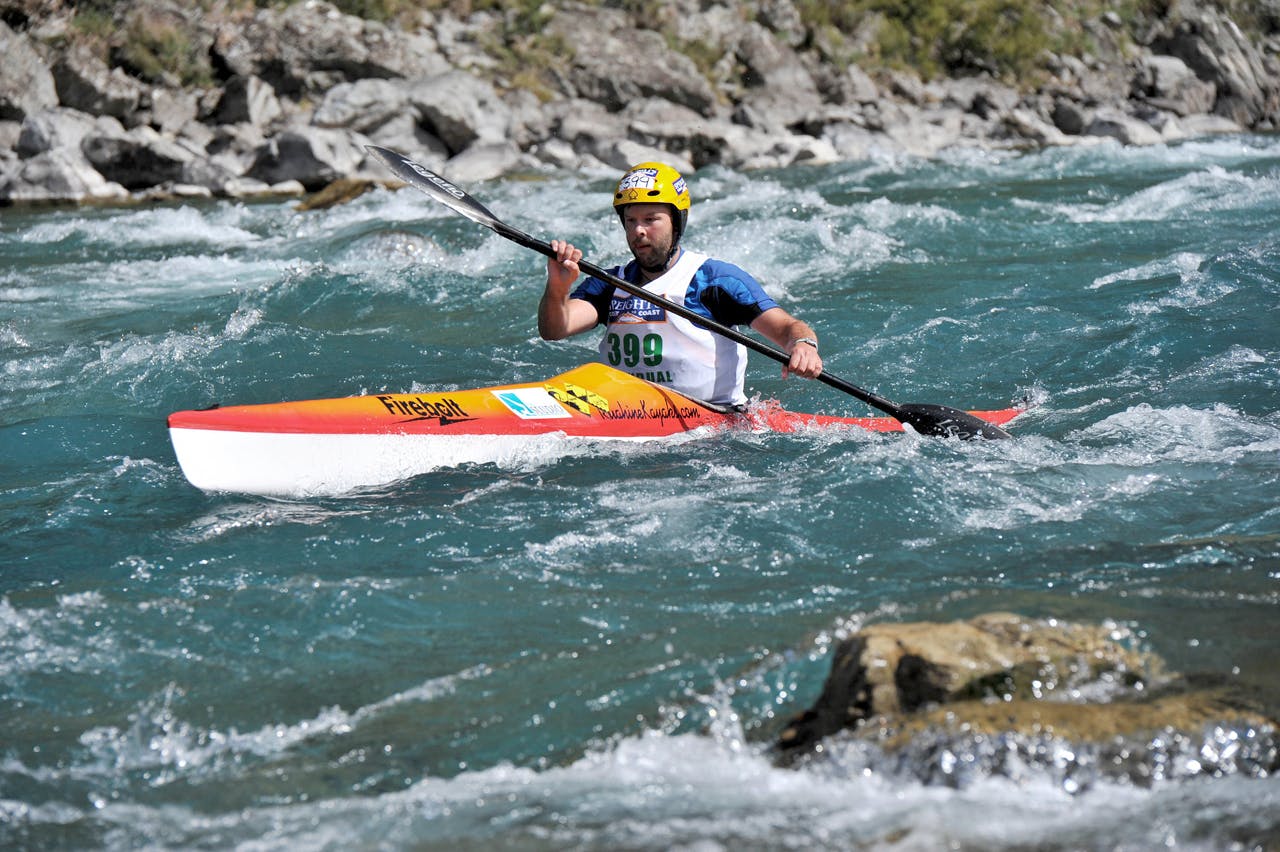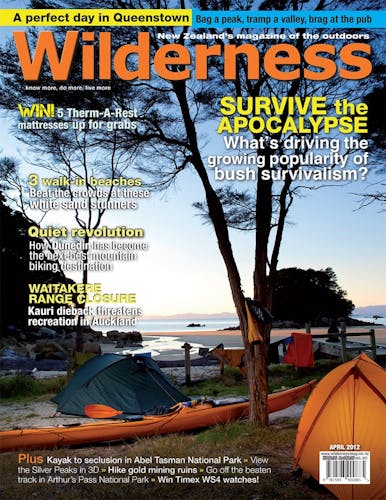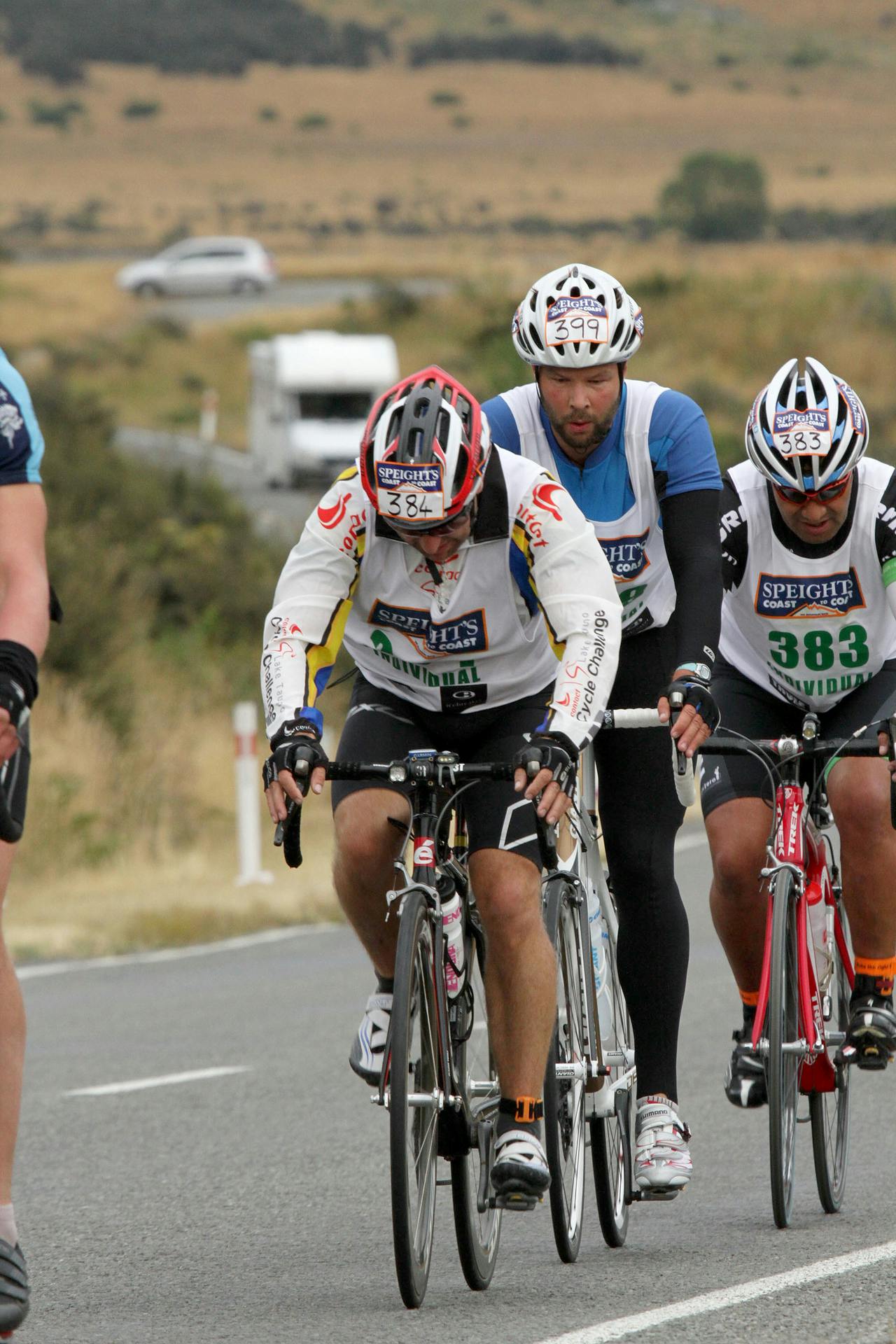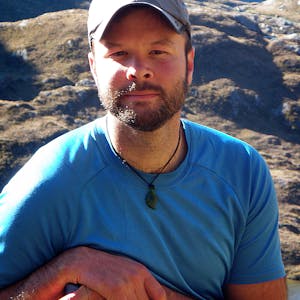The Coast to Coast is a bucket list item for countless Kiwis, but that doesn’t mean it’s necessarily 243km of uninterrupted fun as Mark Banham reports
I’ll admit it right now, there were a few moments where, despite my best attempts to stay positive, the question: “Is this really such a good idea?” worked its way into my thoughts during this year’s Coast to Coast.
After two days of hard racing – and two failed Eskimo rolls – I was well and truly over it. As I bailed out of the kayak, gasped a desperately needed breath of air and fought my way into an eddy, the notion occurred to me that right now the race winners would be celebrating on the beach at Sumner.
At that very moment, I thought, some twenty-year-old bloke, lean as a skinned rabbit and covered from head to toe in sponsors’ logos would be politely fending off requests for interviews and one-night-stands as he bathed in the flicker of camera flashes – it was more than I could bear. As I dragged my kayak onto the rocky river bank, I may have started to quietly sob.
The Coast to Coast is typically described in kilometres travelled and vertical-metres gained. The three cycle stages, two runs and a paddle see competitors travel 243km from Kumara on the West Coast, over the Southern Alps to Sumner on the east coast.
The enlightened talk of the race’s 30-year history, the characters and culture: the analytically minded talk about split times, transition strategies and calories burned.
For me, none of those descriptions explain what it was like. To understand my Coast to Coast experience, it’s necessary to explain it in terms of the race’s emotional topography; the euphoric peaks of elation and dark valleys of despair.
I can honestly say that over sixteen and a half hours of racing, that landscape was utterly spectacular.
The first peak – at sea level
It doesn’t make sense to drink sea water, but then again, when you’re standing on a wind-swept West Coast beach at 6.30am preparing to cross an entire country by pedal, foot and paddle, sensible doesn’t get much of a look-in.
As I cupped my hands to my lips and sipped at the salty liquid with a stupidly surprised “eh?” the enormity of what I’d signed on for began to soak in. If I expected to take around 16 hours to complete the race it’d be by far the longest race I’d ever done – four hours longer than my longest rogaine and almost four times longer than my best Motatapu cross-country marathon.
Strangely, rather than being daunting, those facts buoyed my spirits tremendously. I remember standing there in the pre-dawn gloom thinking, “This is so audacious, so far beyond what a rational person would undertake… that it might actually be fun.”
Clearly I wasn’t alone. About half the 200-odd competitors, stretching and jogging up and down the beach to stay warm, were wearing the same lunatic grin as me.
The starter’s horn sounded. The field sprinted away towards the bikes, parked three kilometres down the road, and I thought “This is going to be awesome!”
Bottoming out on the tarmac
No one knows for sure what keeps a bike upright. Most people think it’s something to do with the gyroscopic force generated by the turning wheels and the “rake” or backward lean of the forks – but both of those theories have been debunked by physicists.
What is very well understood on the other hand is the physics of when it all goes wrong. Take for instance this scenario:
Two bicycles are travelling forwards at 50km/h with the trailing rider’s front wheel overlapping the right-hand side of the lead rider’s rear wheel. The lead bike swerves right, creating a contact between the two riders’ wheels. In order to stay upright the trailing bike needs to steer left but finds there’s now a wheel blocking their path.
No points for guessing what happens next.
I saw the flash of a back wheel pitching skywards as a rider about 10 bikes in front of me went over the bars. The bunch had stretched out into single file and so managed to collectively avoid the hapless rider sliding down the tarmac.
I’ve always thought that when there was a crash, peloton etiquette dictated that everyone should stop – or at least slow down – to make sure nothing serious had happened to the fallen rider.
In this case only two people stopped: me, and the St John’s paramedic trailing the peloton. I couldn’t have been there for more than a minute so managed to catch the bunch at the next hill without much effort, but as I shuffled back into the crowd, not a single soul asked if the crashed biker was okay – so much for camaraderie among competitors.
After that, my start line buzz wore off like skin from an elbow. I did my best to focus on the simple kinaesthetic pleasure of riding through the quiet beech forest-lined roads approaching Aitkins, but just couldn’t seem to drag myself out of the funk.
The runners’ high on Goat Pass
I’m not much of a runner, but that’s okay, because the Coast to Coast’s 33km mountain run leg across the Mingha-Deception Route isn’t something you’d really describe as running.
It’s a route, not a track. There’s the occasional blaze and some trail worn into the bush here and there, but the bulk is pretty much virgin forest through which you have to pick the line of least resistance – most of the time following the edges of the riverbed.
Once up the Deception River, it’s just a matter of climbing over Goat Pass, then following a rough bush trail over Dudleys Knob before stumbling through the frustratingly bouldery Mingha River for the final six kilometres to Aitkins – the finish for day one.
As I hopped from boulder to boulder, drinking from the rivers and climbing over tree-root ladders, the morning rain began to clear revealing a cobalt blue sky.
Three hours into the run I crested the pass and something unusual happened – despite the tiredness gradually leeching its way into my bones and despite the 15km to go – it actually started to become fun.
Some say even the fattest, slowest most unfit slob has within them the genes of a champion runner.
It was as if I’d somehow, in a moment of hypoxic hubris, tapped into that strand of DNA that says we’re built for this sort of stuff. I’d unravelled the strands, picked apart the code and translated it as: ‘Dry your eyes princess, you’ll be fine.’
I guess it’s what they call a ‘runners high’, as I trotted down the river flats of the Mingha Valley with the first day’s finish line in view I wasn’t feeling a narcotic rush, I just had this deep seated feeling that no matter what happened between here and Sumner it’d all be okay.
Poetry in motion
I normally start my day with a strong cup of espresso, but I can honestly say the words “Three… two… one… go!” are far more effective at waking me up.
As I stood on the pedals and accelerated down the dewy tarmac for the 15km cycle to the start of the kayak leg, the life instantly returned to my legs and the grin to my face as some of the faster riders formed a peloton which gradually snowballed, picking up riders as we passed them by.
I’m sure you could write a PhD on peloton politics. No one knows each other, and there’s barely a word spoken, but somehow a quasi-socialist ethos builds with each rider taking a turn at the front according to their ability (or gullibility) and slipstreaming on to the back according to their needs.
In that particular bunch, after a bit of discussion amongst the leading riders we managed to get the whole formation rotating like a conveyor belt with each rider gradually moving to the front of the group, pushing hard for a few hundred metres – acting as a sort of human windshield and then moving left to let someone else take a turn.
Riding in a clutch of cyclists like that really is an amazing demonstration of the idea that, even in a competitive situation, human beings can work together as a team – if only driving in a peak-hour ‘peleton’ of cars worked the same way.
Paddling the depths of despair

Mid way through the disastrous paddle leg – just after the collision and swim
My good friend and multisport mentor Stephen Counsel once told me there are four distinct types of fun:
Type I – Fun at the time and fun to look back on (e.g. skiing powder snow);
Type II – Fun at the time, but not so much in hindsight (e.g. getting drunk at your spouse’s office Christmas party);
Type III – Hateful at the time, but fun to reflect on (e.g. a winter ascent of Mt Aspiring);
Type IV – Something that’s theoretically supposed to be fun, but isn’t at the time – and somehow becomes less fun the more you think about it afterwards.
The 67km kayak down the Waimakariri was the best example of Type IV fun I’ve come across in a long time.
Thinking about it in hindsight is like watching the demolition of an old multi-storey parking lot – with a few well placed explosives the whole thing implodes on itself in a strangely beautiful ballet of destruction.
In my case, the ‘detonators’ were three fairly insignificant problems: I was tired, the river was low, and a spring in my rudder was worn out.
Being so tired, I made shoddy decisions that saw me picking the slow lines and shallow channels. I may have got away with it if the river wasn’t so low. But I had to carry the boat to deeper water more than once. The low water also meant the kayak’s rudder was frequently hitting rock, eventually breaking the spring which holds it in the water.
Without a rudder I couldn’t balance easily, slipstream other kayaks or even steer particularly well to avoid rocks, eddies and other paddlers. In the end, I collided with all three.
It was the last of those collisions that led to my swim. I’d practised just about everything in the kayak: ferry gliding, shallow-water paddling, eddying, bracing, rolling… but the one thing I’d never tried was using my kayak as a battering ram.
With about 13 hours of racing done, I came to a point in the river where two channels re-joined and met up with another paddler coming down the opposite channel.
As the two boats intersected with a hollow clunk I instinctively stepped on the rudder to compensate for the sudden rotation – forgetting that the rudder had ceased working 30km ago.
My last words before going down with the ship were something like: “Sorry mate, I didn’t ….glug, glug.”
Front lawn inspiration
When I arrived at the kayak-to-bike transition, with 70km of cycling to go, I was exhausted, frozen, nauseas and about an hour overdue. The only thing keeping me going was the thought that I was only a few steps in front of the Grim Reaper – if I stopped who knew what might happen.
As I climbed onto my bike and picked up a peloton I was acutely aware that last time I tried something like this my legs cramped up so badly I couldn’t complete a pedal rotation, let alone the race – and that was a three-hour event.
I was flagging badly and desperately needed to find something – anything – to get through the last kilometres to Sumner. And that’s when I saw the first of them.
Standing in front of a crumbling house with crack-strewn walls and a roof that was more tarpaulin than tin, stood an entire family; from the kids in the stroller to the granny in the mobility scooter; yelling encouragement at the tops of their lungs.
“Go you good things!” “C’mon’ guys only twenty kays to go!” “You can do it!” To say it was heart lifting is an understatement – the effect was more like a Pulp Fiction-style shot of adrenalin to the heart.
As the bunch passed close to the condemned red zone of the city centre, the damage grew worse and the front yard cheer squads grew more frequent. Cars tooted their horns in support as they drove along warped roads, kids halted cricket games to cheer and even the police stopping traffic at intersections for us were giving us a little cheer as we went by.
By the time we reached the coastal cliffs of the Pacific Ocean, the road was a mess; lumps bumps, potholes and fresh repairs, the streets were lined with forty-foot shipping containers to reduce the risk of boulders rolling across the road during the almost inevitable future shakes.
In the final kilometre I was so mesmerised by a cliff-top house, cleaved clean in half in half where the land had fallen away underneath it, during last year’s earthquake, that I barely noticed the finishing line coming into view.
Writing this now, I still can’t find the right words to express what it’s like without sounding naff. But for what it’s worth, finishing the Coast to Coast in Christchurch has to go down as one of the most inspirational moments of my life.
How a city can go through the year from hell; 185 people killed; over 100,000 homes damaged, more than 10,000 of them beyond repair; constant aftershocks; countless jobs lost and businesses bankrupted – and yet still have the goodwill to turn out en masse to cheer for someone else’s big achievement defies belief.
Riding that final kilometre to Sumner Beach, the tiredness of the last two days evaporated like dew in the sunshine. The crushing lows and euphoric highs of the last few days all came into perspective – if what I’d been through over the last two days was emotionally hilly – then the last year in Christchurch must have been Himalayan.
As a Wilderness writer, when people ask me what my lasting memory of the 2012 Coast to Coast is, I feel like I should talk about the waters of the Waimakariri, or the quiet beech forest of the Deception Valley. But no, the thing that really sticks in my mind is that final ride into Christchurch – New Zealand’s beating heart of endurance.








